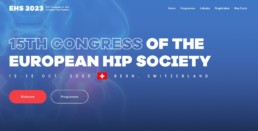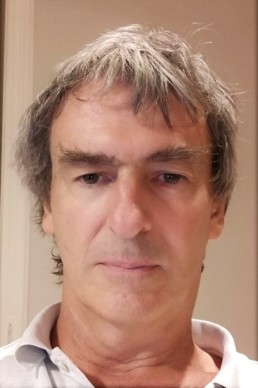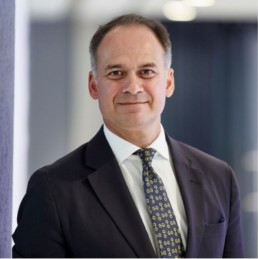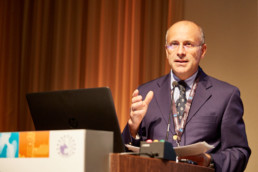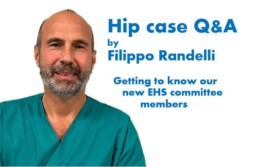Dear Members,
The countdown has begun: it is one year until the next EHS Congress in Bern, Switzerland, and our congress website is now open! Click HERE. Abstracts will be called for in the coming weeks.
EHS celebrates its 30th birthday this month. Look out for an article in the next issue of Hip International celebrating our society.
Next month we greatly look forward to the EHS- SIdA- SIOT Symposium in Rome on Friday 11th November @ 14.30-16.30. For more info please click HERE. Thanks to our Nat Rep for Italy, Dr Nicola Santori, and our EHS Member Prof Franco Benazzo (President of the Italian Hip Society (SIDA)) for organising this. The programme is as follows:-
Session 1 THR for Secondary Arthritis
Moderators: F. Falez (Rome), G. Solarino (Bari)
- 14:30 “THR for DDH Tips & Tricks” F. Benazzo (Brescia)
- 14:40 “THR for rheumatoid arthritis” (tbc)
- 14:50 “Acetabular protrusion & THA: Diagnosis & surgical tips” E. Tsiridis (Thessaloniki, Greece)
- 15:00 “Leg length discrepancy in patients with fixed spine deformities” L. Zagra (Milano)
- 15:10 Q&A & discussion
Session 2 FAIs in 2022: New Concepts
Moderators: C. Carulli (Firenze), F. Randelli (Milano)
- 15:30 “The perfect CAM resection: Tips & Pearls” N. Santori (Roma)
- 15:40 “Treatment of residual paediatric deformities” R. Zini (Pesaro)
- 15:50 “The LABRUM: Algorithm for debridement, repair, augment & reconstruction” P. Di Benedetto (Udine)
- 16:00 “Technical Pearls for Primary Capsular Repair” O. Marin-Peña (Madrid, Spain)
- 16:10 Q&A & discussion
Just a reminder that our EduCom Member, Prof Mattia Loppini, is Guest Editor of the JCM Special Issue on “Clinical Management and Outcome of Periprosthetic Fracture”. We hope many of you will submit papers.
And finally, condolences to all our UK and Commonwealth EHS Members for the passing of Queen Elizabeth II last month. Her dedication and steady strength of character throughout her 70-year reign – including the change of 15 Prime Ministers – will be remembered throughout the world for many decades to come.
Enjoy below our Q&A series – getting to know our new committee members – where we introduce Prof Filippo Randelli (Italy) and Dr Walter van der Weegen (The Netherlands), both of the EHS SciCom. Thanks gentlemen.
Assoc Prof Stanislav Bondarenko, EHS Secretary General
The most common cases I see are hip arthritic patients, then FAI-DDH patients, strictly followed by revision cases and trauma (complex and nonunion or malunion).
I can’t forget her. A 60-year old lady who had already undergone a series of surgeries for a DDH starting with a Schanz osteotomy followed by a total hip replacement and then two revisions. She developed a huge aggressive and unexplained pseudotumor, probably due to bleeding microaneurysms. She had two catheter embolizations before I could reoperate her in a very complicated setting of bone and soft tissue loss.
Difficult to say. Maybe the case of an old lady who sustained a pelvic fracture over an already revised total hip, which was also loosened by the complex fracture. It was very difficult to fix and replace it at the same time from inside and outside the pelvis, in a very poor bone stock.
I think the case of a young Libyan boy, 15, who had jumped on a mine that devastated his legs and feet. It was very difficult to treat. Many staged plastic and orthopaedic surgeries with pending amputations that fortunately never happened.
A young lady with hip pain and instability. I mean soft tissue instability. Hypermobility. Those are the most difficult cases to treat in my opinion. Surgery is often not even the best solution and any effort may result in a bad result. The patient is often unhappy, and us too.
I am not sure which was the most interesting article I have read this year. I can say that the article from Charles Murray Lawrie in Bone and Joint Journal 2021 on modular dual mobility in young active patients was quite reassuring for my practice.
I try to spend time with my beloved family as much as possible. I haven’t been very present for years. Our wonderful work can be sometimes suffocating for us and for our loved ones. I’m trying to reverse course. I go sailing with them and travelling around. Unfortunately, we all love good food. Not good for the diet.
I mostly read two types of books. Detective crime novels, lately Jo Nesbø ones, or adventure/historical books about Pole explorations. It is not coincidence that I spent two weeks at Svalbard Islands last summer. A kind of pathological obsession. Next goal? The South Pole.
I work in the Anna hospital in Geldrop, the Netherlands.
I am the research director of the department of Orthopaedic Surgery. I started this position after completing my academic training as a movement scientist, leaving my former work as physiotherapist.
No doubt getting my PhD! Under the supervision of Prof Rob Nelissen I finished my PhD (2014) on soft tissue reactions following metal-on-metal hip resurfacing surgery. A very rewarding journey in which we discovered that not all pseudotumors are in immediate need of revision surgery and that for specific cases a wait and see policy is the best option.
Hip pathology and treatment for sure! But where in my early research years (a long time ago!) my research was much more on PE wear and hip implant survival, I have now also taken up an interest in digital health care, including artificial intelligence. But of course this is also centred around patients with hip disease. Another interest is fast-track surgery, with research projects on optimization of both the surgical procedures as well as the post operative recovery.
Since my research is centred around hip pathology, both the bi-annual EHS meetings and the Hip International journal are my favourite means of sharing our research results. I am also proud to be a member of the EHS Scientific Committee!
For example colleagues are working on fracture recognition on x-rays. My work however makes use of more standard machine learning techniques on regular datasets holding data from hundreds (now getting into the thousands) of patients who completed a digital history taking form on hip pathology. We then try to predict diagnoses and treatment for these patients. A very exiting new field of AI application.
Besides trail running, I am trying to learn how to play the guitar. Unfortunately I have to make up my limited lack of talent for this with sheer perseverance.


